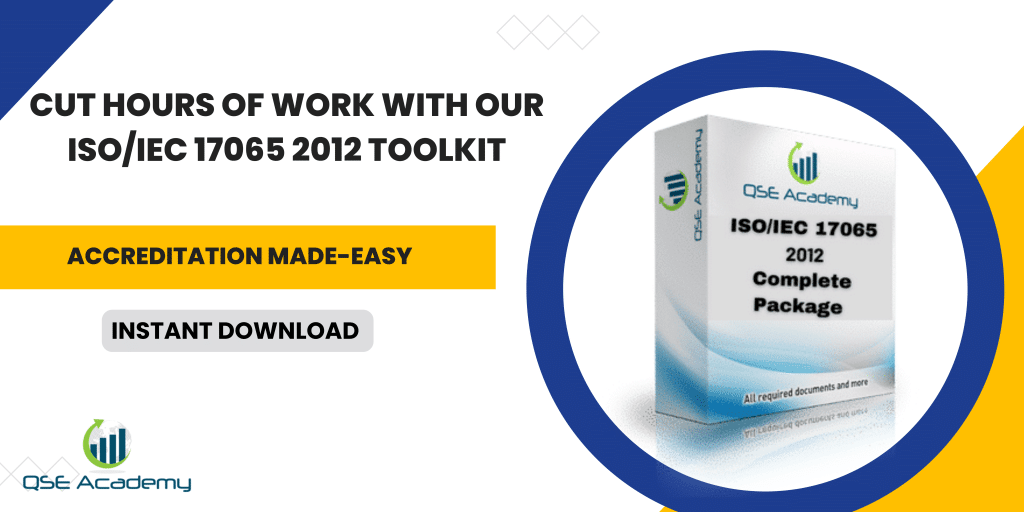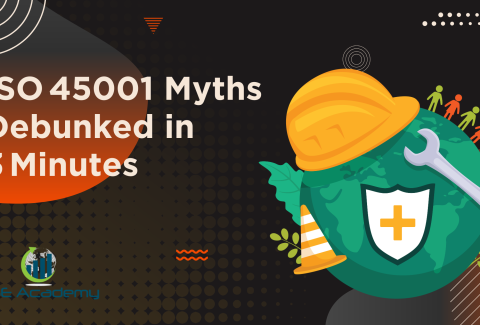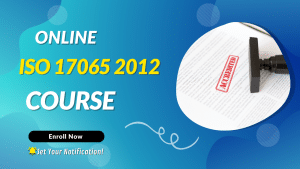Smooth Transition Strategies for Adhering to ISO/IEC 17065
Smooth Transition Strategies for Adhering to ISO/IEC 17065
Last Updated on December 23, 2025 by Hafsa J.
Smooth Transition Strategies for Adhering to ISO/IEC 17065
Transitioning to ISO/IEC 17065 certification can feel like a daunting process. There are new requirements to meet, procedures to refine, and documentation to organize. But here’s the good news—you don’t have to go through it blindly. With the right ISO 17065 transition strategies, you can make the shift smooth, efficient, and stress-free.
Whether you’re a small certification body looking to gain credibility or a well-established organization ensuring compliance with evolving standards, the key to success lies in planning and preparation. Many certification bodies struggle with the transition because they lack a clear strategy, which can lead to delays, non-conformities, and unnecessary expenses. But with structured ISO 17065 transition strategies, you can avoid these pitfalls and move toward compliance confidently and efficiently.
In this article, we’ll explore step-by-step strategies to help your organization successfully transition to ISO 17065 certification. From conducting a gap analysis to strengthening internal certification processes and training your team, these practical insights will help you make the process as seamless as possible.
So, if you’re ready to take the next step toward ISO 17065 compliance, let’s dive into the best ISO 17065 transition strategies and make your certification journey a success!
Understanding the Need for ISO 17065 Transition Strategies
Transitioning to ISO/IEC 17065 certification isn’t just about ticking boxes—it’s about ensuring your certification body operates with credibility, transparency, and fairness. But let’s be honest: making the shift can feel overwhelming. That’s exactly why having the right ISO 17065 transition strategies in place can make all the difference.
If your organization is preparing for ISO 17065 certification, understanding why this transition matters and what challenges to expect will help you navigate the process smoothly. Let’s break it down.
Why Transitioning to ISO 17065 is Important
So, why does ISO 17065 certification matter in the first place? Simple: it strengthens trust in certification bodies. Whether you’re certifying organic food, safety standards, or sustainable products, businesses and consumers need to know that your certification process is fair, impartial, and well-structured.
Here’s why making a smooth transition to ISO 17065 compliance is essential:
- Market Credibility – ISO 17065 certification tells businesses and consumers that your certification decisions are based on a rigorous, standardized process, not influenced by outside pressures.
- Regulatory Acceptance – Many industries require certification bodies to be ISO 17065 accredited before they can issue recognized product or service certifications.
- International Recognition – If your organization wants to expand globally, ISO 17065 compliance ensures your certification schemes are trusted worldwide.
Having well-planned ISO 17065 transition strategies will help your organization meet these standards without unnecessary headaches.
Common Challenges During the Transition
Now, let’s talk about the biggest roadblocks that certification bodies face when transitioning to ISO 17065 certification. If you’ve been struggling with any of these, you’re not alone!
- Lack of Understanding of ISO 17065 Requirements – Many organizations underestimate how detailed and specific the standard is, leading to confusion during implementation.
- Updating Internal Certification Processes – Certification bodies must prove that their decisions are impartial, consistent, and backed by a structured process—which often requires significant procedural changes.
- Managing Documentation and Impartiality Policies – Proper record-keeping and transparency are key to compliance, but many organizations struggle with creating an organized documentation system.
- Training Staff to Meet the New Compliance Framework – Without proper training, employees may unintentionally overlook important ISO 17065 requirements, leading to compliance gaps.
The good news? These challenges can be avoided or minimized with the right ISO 17065 transition strategies—and that’s exactly what we’ll cover in the next section!
By taking a structured, step-by-step approach, you’ll not only make the transition smoother and faster but also reduce the risk of non-conformities and certification delays. Ready to dive into the best ISO 17065 transition strategies? Let’s get started!
Step-by-Step ISO 17065 Transition Strategies for a Smooth Shift
Now that we’ve covered why ISO 17065 certification is important and the common challenges organizations face, let’s dive into the ISO 17065 transition strategies that will help you move through the process efficiently and with confidence.
Whether you’re just starting your journey or refining your current certification processes, these step-by-step strategies will help you navigate the transition without unnecessary stress or delays.
Step 1 – Conduct a Readiness Assessment and Gap Analysis
Before jumping into implementation, it’s crucial to understand where your organization currently stands in relation to ISO 17065 requirements. This is where a gap analysis comes in.
What to do:
Review the ISO 17065 standard and compare it to your current certification processes.
Identify gaps in documentation, impartiality policies, and decision-making frameworks.
Create a transition roadmap that outlines what needs to be updated or improved.
Pro Tip: Many successful certification bodies featured in ISO 17065 transition strategies started by conducting a self-assessment or working with an ISO consultant to pinpoint compliance gaps.
Step 2 – Strengthen Internal Certification Processes
One of the biggest shifts in transitioning to ISO 17065 compliance is ensuring your certification decisions are structured, impartial, and well-documented.
What to do:
Establish clear guidelines for certification decision-making.
Ensure your impartiality policy is strong—eliminate conflicts of interest.
Define procedures for handling certification disputes, appeals, and renewals.
Pro Tip: Certification bodies that successfully implemented ISO 17065 transition strategies found that standardizing decision-making procedures helped reduce errors and improve audit outcomes.
Step 3 – Build a Documentation and Record-Keeping System
Proper documentation is the backbone of ISO 17065 compliance. Without clear records, it’s difficult to prove that your certification body is operating fairly and consistently.
What to do:
Develop a structured record-keeping system for certification decisions.
Maintain documentation on auditor qualifications, certification criteria, and complaint handling.
Ensure records are secure, well-organized, and easily retrievable for audits.
Pro Tip: Using compliance software or a document management system can help streamline record-keeping and make audits significantly easier.
Step 4 – Train and Educate Your Team
A smooth ISO 17065 transition isn’t just about processes and documents—it’s also about your people. Your staff needs to fully understand ISO 17065 requirements to ensure long-term compliance.
What to do:
Train auditors and decision-makers on ISO 17065 standards and best practices.
Provide workshops or e-learning courses to keep staff updated on compliance changes.
Foster a culture of accountability—make compliance a part of daily operations.
Pro Tip: Certification bodies that prioritized staff training as part of their ISO 17065 transition strategies saw fewer audit non-conformities and smoother certification renewals.
Step 5 – Perform Internal Audits Before the Official Assessment
A great way to avoid surprises during the official audit is to conduct internal audits beforehand. Think of it as a practice run—it helps identify gaps, errors, and potential issues before they become major problems.
What to do:
Perform trial audits that mimic the actual ISO 17065 certification assessment.
Identify and correct any non-conformities before the official audit.
Use findings from internal audits to continuously improve compliance efforts.
Pro Tip: Many successful organizations in ISO 17065 transition strategies assigned internal audit teams or hired ISO consultants to ensure they were fully prepared.
Step 6 – Engage with an Accreditation Body Early
Your ISO 17065 certification must come from a recognized accreditation body, so it’s important to start discussions early and ensure they’re a good fit for your certification scope.
What to do:
Research accreditation bodies that specialize in your industry.
Reach out to them early in the transition to understand their audit process.
Build a relationship with your accreditation body to streamline future renewals.
Pro Tip: Many organizations featured in ISO 17065 transition strategies recommend choosing an accreditation body that aligns with your industry needs to ensure a smoother compliance process.
Final Thoughts on ISO 17065 Transition Strategies
Transitioning to ISO 17065 certification doesn’t have to be overwhelming. By following these ISO 17065 transition strategies, you can streamline the process, avoid common pitfalls, and achieve compliance smoothly.
Conduct a gap analysis to assess where you stand.
Strengthen internal certification procedures to ensure impartiality and transparency.
Establish a solid documentation system to maintain compliance.
Invest in staff training to create a knowledgeable, compliance-driven team.
Perform internal audits to catch and fix issues before the official assessment.
Engage with an accreditation body early for a smoother transition.
By taking a structured and strategic approach, your certification body can successfully navigate the transition and achieve ISO 17065 compliance with confidence.
Ready to take the next step? In the next section, we’ll discuss how to overcome common roadblocks and keep your transition on track!
Overcoming Common Roadblocks in the ISO 17065 Transition Process
Even with the best ISO 17065 transition strategies, organizations often run into roadblocks that can slow down or complicate the process. If you’re feeling stuck, don’t worry—you’re not alone! Many certification bodies face resistance to change, budget concerns, and evolving compliance requirements. The key is to anticipate these challenges and have a plan to overcome them.
Let’s explore some of the most common obstacles and how to tackle them effectively so your transition to ISO 17065 compliance stays on track.
Handling Resistance to Change Within the Organization
One of the biggest hurdles in ISO 17065 transition strategies is getting everyone on board. Change can be intimidating, and some team members may resist new policies, stricter documentation requirements, or additional training.
Why this happens:
- Employees may feel overwhelmed by new compliance rules.
- Some may not see the immediate value of ISO 17065 certification.
- There might be concerns about extra workload or complexity.
How to overcome it:
- Communicate the benefits of ISO 17065 certification clearly—explain how it enhances credibility, efficiency, and business opportunities.
- Engage leadership to set the tone and encourage company-wide adoption.
- Offer training and support to help employees feel confident about the transition.
Pro Tip: Certification bodies that successfully implemented ISO 17065 transition strategies found that involving staff early in the process and providing hands-on training reduced resistance significantly.
Managing Costs and Resources Effectively
Budget concerns can be a major barrier in the ISO 17065 transition process. Many certification bodies worry about the costs of audits, training, and system upgrades.
Why this happens:
- Accreditation fees and audits can be expensive.
- Updating documentation systems may require new software or tools.
- Training staff to meet ISO 17065 requirements takes time and resources.
How to overcome it:
- Spread out costs by creating a phased implementation plan—focus on high-priority areas first.
- Utilize free or low-cost training resources from ISO organizations or online platforms.
- Invest in automation tools to reduce manual work and long-term compliance costs.
Pro Tip: Many organizations featured in ISO 17065 transition strategies found that early planning and smart budgeting helped them transition without financial strain.
Keeping Up with Evolving Compliance Requirements
ISO standards are not static—they evolve over time to reflect new industry needs and regulatory updates. Certification bodies need to be proactive in keeping up with these changes to ensure long-term compliance.
Why this happens:
- Organizations get ISO 17065 certified but fail to monitor updates or new requirements.
- Compliance can slip over time due to lack of ongoing audits and training.
How to overcome it:
- Schedule periodic internal audits to keep compliance fresh.
- Subscribe to industry updates from ISO and accreditation bodies to stay informed.
- Assign a compliance officer or team to continuously monitor regulatory changes.
Pro Tip: Successful certification bodies in ISO 17065 transition strategies make compliance a continuous process, not a one-time event—this helps them avoid last-minute surprises during re-certifications.
Final Thoughts on Overcoming ISO 17065 Transition Challenges
Every certification body faces unique challenges during the ISO 17065 transition, but with proper planning, clear communication, and strategic budgeting, you can navigate these roadblocks successfully.
Address resistance to change by educating and engaging your team.
Manage costs strategically to avoid financial strain during the transition.
Stay updated on compliance changes to maintain long-term certification.
By staying proactive and applying these ISO 17065 transition strategies, your organization will not only achieve certification but also maintain compliance with confidence.
In the next section, we’ll look at best practices for ensuring long-term success after the transition—because certification isn’t just about getting approved, it’s about staying compliant year after year!
Best Practices for Long-Term Compliance After Transitioning to ISO 17065
So, you’ve successfully navigated the transition to ISO 17065 certification—congratulations! 🎉 But here’s the thing: getting certified is just the beginning. To keep your certification valid, relevant, and beneficial, you need to focus on long-term compliance.
The best ISO 17065 transition strategies don’t just stop at certification. They ensure that your organization continues to meet requirements, improve processes, and stay ahead of evolving industry standards. Let’s dive into some best practices to help your certification body maintain compliance effortlessly.
Establish a Culture of Quality and Compliance
Transitioning to ISO 17065 compliance isn’t just about passing an audit—it’s about making quality assurance and impartiality a part of your organization’s DNA.
How to do it:
Train employees regularly so that compliance isn’t just an occasional focus, but an everyday habit.
Make quality and transparency a key performance indicator (KPI) for decision-makers.
Encourage open communication—if someone sees a compliance risk, they should feel comfortable bringing it up.
Pro Tip: The best ISO 17065 transition strategies involve ongoing training and leadership involvement—organizations that embed compliance into their company culture have fewer audit issues down the road.
Use Technology to Streamline Compliance
One of the biggest challenges certification bodies face after achieving ISO 17065 compliance is keeping up with documentation and audit requirements. The good news? Technology can make this a whole lot easier.
How to do it:
Implement a document management system to track all certification records.
Use compliance software to automate tasks like internal audits, certification renewals, and risk assessments.
Set up reminders and alerts for key compliance deadlines so nothing falls through the cracks.
Pro Tip: Many organizations that successfully followed ISO 17065 transition strategies found that investing in compliance automation tools not only reduced errors but also saved time and resources in the long run.
Schedule Periodic Internal Reviews to Maintain Standards
Just because you passed your ISO 17065 audit once doesn’t mean you’re set for life. Ongoing internal reviews are essential to maintaining compliance and staying ahead of future accreditation audits.
How to do it:
Conduct internal audits at least once a year to check for compliance gaps.
Keep up with ISO updates and adjust processes as needed.
Review certification decisions and impartiality policies regularly to ensure consistency.
Pro Tip: Certification bodies that follow proactive ISO 17065 transition strategies treat internal audits as mini-checkups, helping them identify and fix issues before they become major compliance risks.
Stay Connected with Accreditation Bodies and Industry Updates
ISO standards don’t stay the same forever—they evolve to keep up with new regulations, technologies, and industry best practices. Staying informed will help your organization stay compliant and competitive.
How to do it:
Subscribe to ISO newsletters, industry publications, and regulatory updates.
Maintain an open line of communication with your accreditation body.
Join industry forums and associations to exchange insights with other certification bodies.
Pro Tip: Organizations that actively engage with industry groups and regulatory bodies tend to be better prepared for future changes to ISO 17065 requirements.
Final Thoughts on Long-Term Compliance with ISO 17065
Maintaining ISO 17065 compliance isn’t about doing one big thing once—it’s about consistently following best practices to ensure your certification remains valid and valuable.
Build a culture of compliance where quality and impartiality are part of everyday operations.
Use technology to automate compliance tasks and reduce the risk of errors.
Conduct regular internal audits to catch issues before they become problems.
Stay informed about ISO updates and industry changes to keep your certification relevant.
By implementing these ISO 17065 transition strategies, your certification body can stay compliant, improve efficiency, and enhance its reputation in the long run.
Ready for the final wrap-up? In the next section, we’ll bring everything together and discuss how to make ISO 17065 transition strategies work for your organization!
Conclusion – Making ISO 17065 Transition Strategies Work for Your Organization
Transitioning to ISO 17065 certification might seem like a big challenge at first, but with the right ISO 17065 transition strategies, it can be a smooth and rewarding process. Whether you’re just starting the journey or fine-tuning your compliance approach, taking a structured and strategic path will save you time, effort, and stress in the long run.
The key takeaway? ISO 17065 compliance isn’t just about passing an audit—it’s about building a stronger, more credible certification body. Organizations that successfully transition to ISO 17065 don’t just focus on meeting the requirements for certification; they create long-term systems for quality, impartiality, and transparency.
Recap of Essential ISO 17065 Transition Strategies
Start with a Readiness Assessment – Identify gaps and create a plan to address them.
Strengthen Certification Processes – Ensure decision-making is fair, impartial, and well-documented.
Optimize Documentation and Record-Keeping – Create a structured system for tracking compliance.
Train Your Team Continuously – Make sure employees fully understand ISO 17065 requirements and best practices.
Perform Internal Audits Before the Official Assessment – Catch and fix potential compliance issues early.
Engage with Accreditation Bodies Early – Choose the right ISO 17065 accreditation partner for smoother certification.
Implement Ongoing Compliance Practices – Keep up with industry changes, periodic audits, and evolving standards.
By following these ISO 17065 transition strategies, your organization can navigate the certification process with confidence, ensuring you achieve compliance without unnecessary delays or stress.
Your Next Steps Toward ISO 17065 Certification Success
If your organization is preparing for ISO 17065 certification, now is the time to:
Assess where you stand using a gap analysis.
Develop a transition plan based on best practices.
Train your team and implement compliance-friendly processes.
Work with an accredited certification body to finalize your certification.
By applying these ISO 17065 transition strategies, your certification body will not only meet compliance requirements but also enhance its reputation, efficiency, and long-term success.
Are you ready to take the next step? Start implementing these strategies today and set your organization up for a smooth and successful ISO 17065 transition!
I hold a Master’s degree in Quality Management, and I’ve built my career specializing in the ISO/IEC 17000 series standards, including ISO/IEC 17025, ISO 15189, ISO/IEC 17020, and ISO/IEC 17065. My background includes hands-on experience in accreditation preparation, documentation development, and internal auditing for laboratories and certification bodies. I’ve worked closely with teams in testing, calibration, inspection, and medical laboratories, helping them achieve and maintain compliance with international accreditation requirements. I’ve also received professional training in internal audits for ISO/IEC 17025 and ISO 15189, with practical involvement in managing nonconformities, improving quality systems, and aligning operations with standard requirements. At QSE Academy, I contribute technical content that turns complex accreditation standards into practical, step-by-step guidance for labs and assessors around the world. I’m passionate about supporting quality-driven organizations and making the path to accreditation clear, structured, and achievable.








